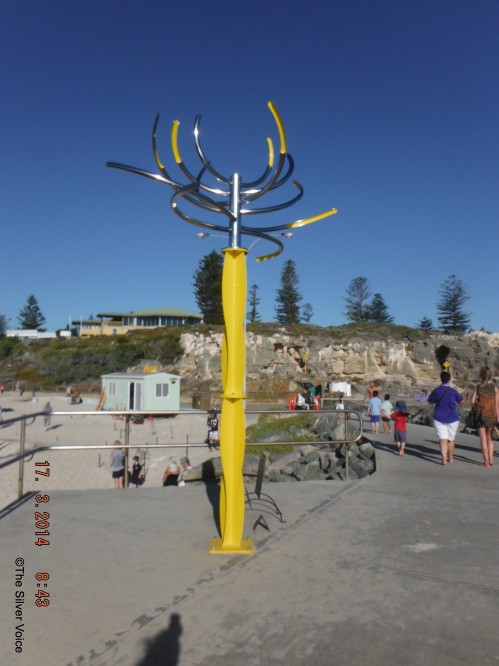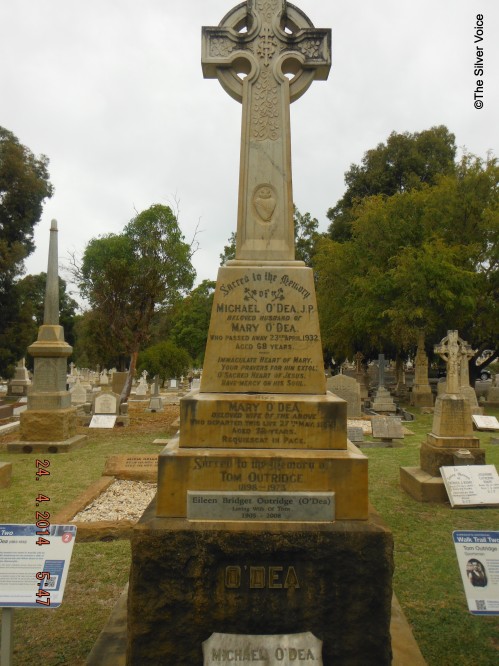
Flying Boat. Full scale replica of Boeing 314
On a beautiful sunny day, too hot to sit out, I headed 10 miles north to the cooling waters of the River Shannon and pulled in to the Foynes Flying Boat and Maritime Museum. What a serendipitous decision that was, with the Museum about to celebrate 75 years of commercial transatlantic flight. Imagine! ONLY 75 years since those flights began, and haven’t they come a long way as we now criss-cross the Atlantic without giving it a second thought!
 At Foynes, just 15 minutes off the Wild Atlantic Way from Tarbert, Co Kerry,the only Flying Boat Museum in the world is in the original terminal building right on the main street on the N69 Tralee to Limerick road.
At Foynes, just 15 minutes off the Wild Atlantic Way from Tarbert, Co Kerry,the only Flying Boat Museum in the world is in the original terminal building right on the main street on the N69 Tralee to Limerick road.
Rineanna had been selected as the location for an airport as the wide River Shannon estuary on Ireland’s west coast made identification easy for pilots who had crossed the 2,000+ miles of Atlantic Ocean. While the new airport at Rineanna – now Shannon Airport – was being built, it was decided that Foynes, further down the estuary,would be a good interim location for the European Terminal. After some test flights in either direction, on 9 July 1939 the first commercial flight, the Yankee Clipper arrived.
The Museum is full of treasures for aviation enthusiasts as well for the non-expert like me. It is a techy-kids paradise as there are several interactive pieces of equipment on which they can have fun.
The Museum is in three main sections. The Aviation section is devoted to the history of trans Atlantic flight, the focal point of which is a full-scale replica of the Yankee Clipper. This can be explored at leisure. Upstairs is the very spacious flight deck, relatively devoid of any high-tech banks of dials and gauges.

The fight deck of the Yankee Clipper

Cockpit of the Yankee Clipper
The B.314 could carry thirty-five passengers in relative luxury. The dining room could seat fourteen at a time for a seven-course meal, freshly prepared by cabin crew. The seats converted to bunk beds for sleeping. and there was even a honeymoon suite on board! There certainly were no leg-room issues here!

The dining room which seated 14

The toilet areas

Seating for 35 passengers with lots of leg room!
With tickets costing up to $600, only the very wealthy could afford to travel on these early flights. Posters advertising exotic destinations adorn the walls of the recreated waiting room
There is a good display of old radio and morse code equipment as well as flight simulators that can be tried out!

Lots of old wireless equipment on display

Pilot training equipment for budding pilots of all ages
There were security issues back in those days too as can be on this notice.

The new trans Atlantic service attracted a number of wealthy and high profile travellers.
 Among the high flyers on these first flights from New York to Foynes, were Ernest Hemingway, Anthony Eden, John F. Kennedy, Lord Mountbatten, Yehudi Menuhin, Eleanor Roosevelt, Bob Hope, Gracie Fields, Douglas Fairbanks Snr and Humphrey Bogart, and Marilyn Monroe.
Among the high flyers on these first flights from New York to Foynes, were Ernest Hemingway, Anthony Eden, John F. Kennedy, Lord Mountbatten, Yehudi Menuhin, Eleanor Roosevelt, Bob Hope, Gracie Fields, Douglas Fairbanks Snr and Humphrey Bogart, and Marilyn Monroe.

Irish Coffee to warm up the frozen passengers
Irish coffee was invented by chef Joe Sheridan at Foynes in 1943. A Hologram presentation tells the story of the first glass served in the B O’Regan Bar to cold and wet passengers!
On a more sober note, here too is part of the wreck of a BOAC Sunderland that was travelling from Lisbon to Foynes and crashed into Mount Brandon in Kerry in foggy conditions. 10 crew and passengers, mostly military personnel, lost their lives on July 28 1943

Remains of BOAC Sunderland

The plane crashed into Mount Brandon
More details of this tragedy can be seen here
Foynes was the centre of European Aviation for a brief time only and ended in 1945 when Shannon Airport opened. Passenger flights ceased at the onset of WW 2 in September 1939, although military traffic continued to use the facility throughout the war. In the 1940s style cinema the story of the ‘Atlantic Conquest’ is fascinating and will be enjoyed by all!
The recently extended Museum now includes a Maritime Section. The River Shannon on which Foynes is located has an impressive history, from Limerick City to Loop Head right at the end of the Estuary.
US Civil War Confederate uniforms manufactured in Limerick at the Tait factory, were shipped from Foynes, breaking the Union Blockade.

Tait Confederate Uniforms shipped to USA during Civil war
Not only goods, but people too were exported from the Shannon region. Many emigrants’ had their last glimpses of Ireland here. I was particularly taken with this poster from 1842 advertising passage to USA.

A poster from 1842 – no fewer than 5 ships would be sailing to American within a few days of one another
Here at the Museum the hand-made weather charts drawn up at Shannon have been preserved in the Archives (miraculously saved from a skip!) Their Archive includes letters, diaries, postcards newspapers relating to Foynes as an air hub and about 200 years of records relating to Foynes as an important harbour, including bills of lading and correspondence between ship owners and others. In addition they hold an extensive collection of papers on Local History as there were a number of prominent and influential families living in this area.

D-day Weather Chart
The original Control Tower has recently opened and provides great views across the river and is truly the pinnacle of the tour around this wonderful place. Foynes Harbour is Ireland’s premier deepwater bulk carrier port. On the day of my visit, there was no merchant shipping berthed, but the gantries used to load and unload the giant ships up to 250,000 tonnes, can be seen here.

Sadly the rail station closed in the 1960s, but hopefully some project may be found to utilize this beautiful cut stone building

Foynes railway station- now closed with Alumina plant in the background
The Celtic Cross peeping out from the trees on the hill was used as a marker by pilots flying into Foynes. This is a memorial to Edmund Spring Rice, a local landlord and politician who was held in high esteem in the area

The Spring Rice Cross from the Control Tower
Some nice original feautures have been retained in the old terminal building

Original ceiling detail

Original sash window with brass fittings
There is so much to see at this excellent little museum – surely one of the mid -west’s best kept secrets! It is so well worth a visit and has something for everyone. It also boasts a coffee shop and restaurant serving up some delicious food and homemade cakes.
To celebrate the 75th Birthday, there will be a spectacular air display tomorrow, out over the wide River Shannon – it should be a wonderful sight! Happy Birthday to them!
My thanks to Foynes Flying Boat and Maritime Museum for permission to take photographs and for the guided tour of their extensive archive during Heritage week in 2013. The archive is accessible to researchers – see website for details.
Further reading:
Foynes Flying Boat Museum
Sunderland G-AGES Crash








































 Even on plain headstones, the family names are resoundingly Irish. The sheer number of them is quite remarkable. In this photo above 7 Celtic Cross headstones can be seen.
Even on plain headstones, the family names are resoundingly Irish. The sheer number of them is quite remarkable. In this photo above 7 Celtic Cross headstones can be seen.  As with the O’Dea headstone above, this image has a representation of the Immaculate Heart of Mary, a Catholic symbol included in the design , with the image surrounded by Shamrock on the O’Callaghan memorial.
As with the O’Dea headstone above, this image has a representation of the Immaculate Heart of Mary, a Catholic symbol included in the design , with the image surrounded by Shamrock on the O’Callaghan memorial. The Hon Timothy Quinlan was born in Borrisokane Co Tipperary in 1861 and emigrated to Australia with his family at the age of 2 years. His very Irish memorial records his rise to the top of Western Australian political life.
The Hon Timothy Quinlan was born in Borrisokane Co Tipperary in 1861 and emigrated to Australia with his family at the age of 2 years. His very Irish memorial records his rise to the top of Western Australian political life. Three different Celtic Crosses.
Three different Celtic Crosses.  This memorial towers above the others, and exceptionally shows a harp, another iconic Irish symbol. (The one depicted here is the reverse of the official Irish symbol). John Hardy was a native of County Antrim and a veteran of the Crimean War. He emigrated to Australia in 1866, at the age of 42,and ended up as a Pensioner Guard at Fremantle prison. His full (and colourful) military record can be seen
This memorial towers above the others, and exceptionally shows a harp, another iconic Irish symbol. (The one depicted here is the reverse of the official Irish symbol). John Hardy was a native of County Antrim and a veteran of the Crimean War. He emigrated to Australia in 1866, at the age of 42,and ended up as a Pensioner Guard at Fremantle prison. His full (and colourful) military record can be seen  These headstones with their Celtic Crosses date from the very early 20th Century. As such they would either be Irish-born or children of Irish-born emigrants who went here in search of a new life. The Daly monument here shows the link to Cork Ireland, in contrast to the image below of a tragic pair of young men, possibly brothers and young emigrants, or sons of Irish emigrants , who lost their lives in accidents. Their headstone is a simple one yet included the Celtic Cross and Shamrock as testament to their origins.
These headstones with their Celtic Crosses date from the very early 20th Century. As such they would either be Irish-born or children of Irish-born emigrants who went here in search of a new life. The Daly monument here shows the link to Cork Ireland, in contrast to the image below of a tragic pair of young men, possibly brothers and young emigrants, or sons of Irish emigrants , who lost their lives in accidents. Their headstone is a simple one yet included the Celtic Cross and Shamrock as testament to their origins.


 At Foynes, just 15 minutes off the Wild Atlantic Way from Tarbert, Co Kerry,the only Flying Boat Museum in the world is in the original terminal building right on the main street on the N69 Tralee to Limerick road.
At Foynes, just 15 minutes off the Wild Atlantic Way from Tarbert, Co Kerry,the only Flying Boat Museum in the world is in the original terminal building right on the main street on the N69 Tralee to Limerick road.









 Among the high flyers on these first flights from New York to Foynes, were Ernest Hemingway, Anthony Eden, John F. Kennedy, Lord Mountbatten, Yehudi Menuhin, Eleanor Roosevelt, Bob Hope, Gracie Fields, Douglas Fairbanks Snr and Humphrey Bogart, and Marilyn Monroe.
Among the high flyers on these first flights from New York to Foynes, were Ernest Hemingway, Anthony Eden, John F. Kennedy, Lord Mountbatten, Yehudi Menuhin, Eleanor Roosevelt, Bob Hope, Gracie Fields, Douglas Fairbanks Snr and Humphrey Bogart, and Marilyn Monroe.

















